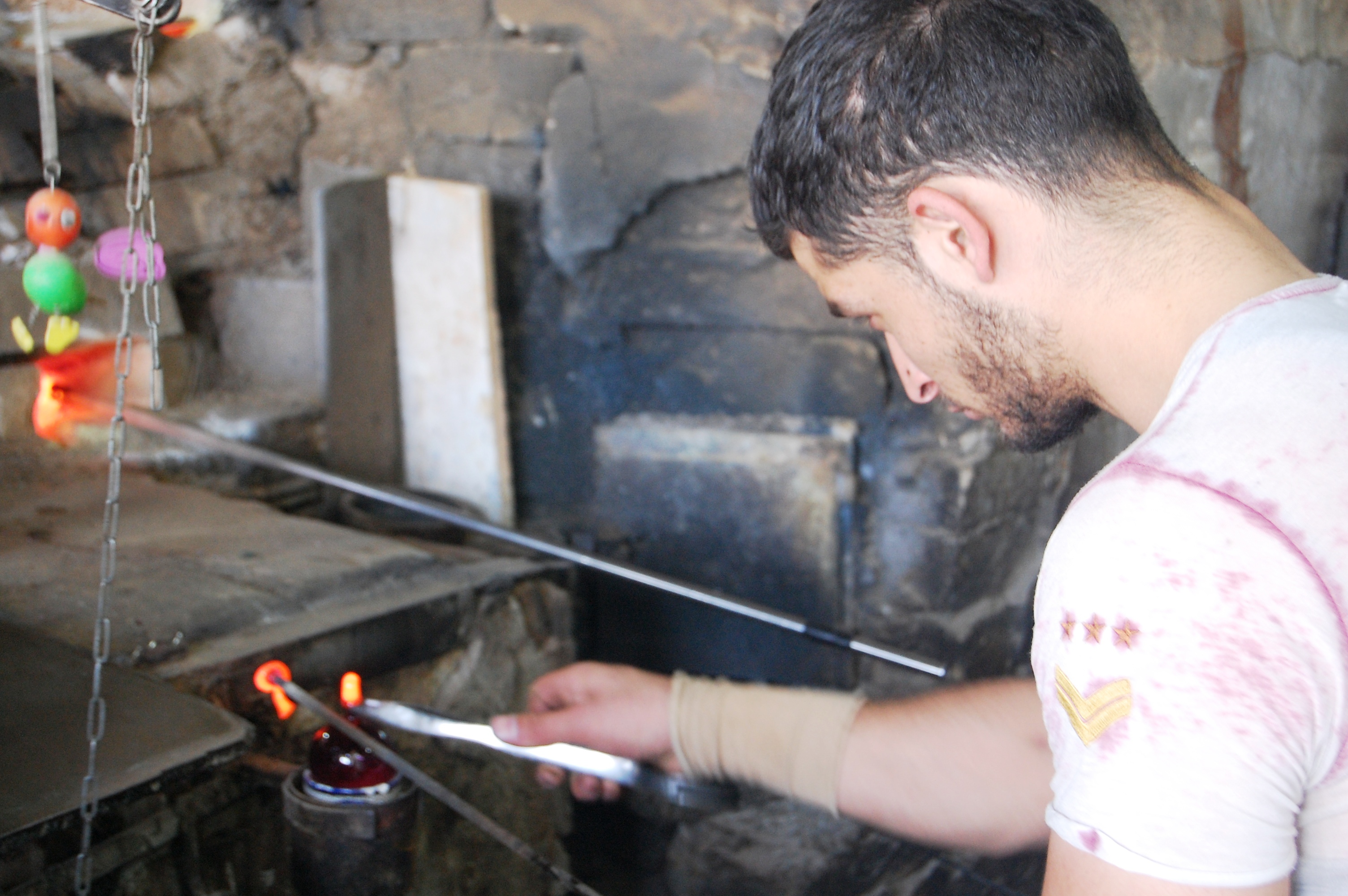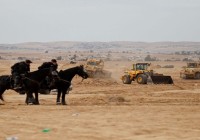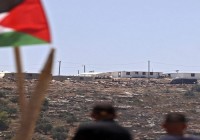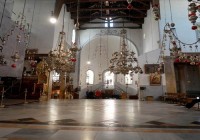Hebron’s Glass: From a Flame Nozzle to the Shelves of International Exhibitions
Manufacturing glass and ceramic in the old manual way represents a cultural and traditional identity for the special city of Hebron, with its distinctive religious, traditional and industrial status. The annual production of the Palestinian traditional glass is estimated to be one million dollars per year.

Hebron- Palestine Economy Portal | Hasna al Rantisy-A young man in his twenties is sitting in front of a thermal oven, he’ playing with the melting glass;puts it into the oven, takes it out, shakes it, breathes into it, and forms what looks like a flaming glass balloon. He moves the glass balloon in his hands using what looks like a long iron bar, to finally create a glistering glass masterpiece in the form of pitchers, lamps, vases, cups, plates, and other shapes and models. The shapes are created in different sizes, and in an artistic, creative, and meticulous care that fascinates all who see them.
The piece then moves to the drawing section, where a number of painters sit around one table. The first painter takes it a clean, white piece and draws black decorative borders, then another one receives it and starts filling the gaps and black borders with colors that suit the piece depending on its kind; be it a pitcher, a glass bowl, a cup, or the like.
A third worker takes the piece and coats it with liquid glass, then they put in an oven of 1000 Celsius degrees for 24 hours to make it healthy and usable in a microwave or a dishwasher. Finally, whenvisitorsgo to a glass exhibition they find it on the shelves, fall in love with it, and purchase it to decorate their houses or offices.
A hereditary profession
With over 700 years of age, this profession has moved through generations like genetics do; says Abdul Jawad Natsheh, owner of Hebron Glass and Ceramic Factory. He adds “nothing changed in this factory ever since it was established except for the oven. We previously used to have a firewood oven, and now we use a diesel oven instead. Nothing else changed; the tasks and structures are the same”. He also alluded to the obstacles set by the Israeli occupation on importing machinery and tools that would help in developing this craft.
Natsheh has four sons that supervise the work in the factory and organize it, in addition to about 18 workers, with a minimum salary of 2000 NIS.
As for the materials they use, they collect broken glass from the streets, then they fuse it again to create a glass masterpiece.
High demand
Natsheh says that the local demand on glass showpieces was low, and that it lately gained a good local attention,in a way that leaves space for development. However, he says; the foreign demand is much higher, as his factory is a destination for foreigners from all over the world who wish to witness the life cycle of creating these showpieces at near.
A deep-rooted profession
Natsheh recalls a conversation he had with an owner of an Italian factory who came to visit him, he says: “I asked him whether his factory was bigger than mine or not, and he answered 'No, your factory is much bigger. Your factory is hundreds of years old, and it maintains the traditional mechanisms, while in our factory machines do the work, and therefore the creative and artistic touch is in yours’.”
Travels the world
As for the market of the glass showpieces, Natsheh points that these pieces roam the world in all directions, and reach all countries. He also says that there is an active marketing in Israel for these pieces, as the local marketing is not as strong as the international one.”
Bitter obstacles
Khaled Natsheh, one of Abdul Jawad sons, expresses his pride for inheriting this craft, which gains a higher statusevery day. He says that he feels the ecstasy of victory when he sees visitors puzzled while choosing the pieces that appeal to them the most; each piece being beautiful and special in its own way.
But as usual, Israeli obstaclessabotage every success story. Shipping and exporting the showpieces out of Palestine face a lot of obstacles, which deduct a good portion of profit as Khaled Natsheh says, as the costs of the crossings and Israeli ports are very expensive.
In addition to that, Chinese products are sold at a lower price and a lower quality as well, but it competes in the industry and dominates a portion of its market.
And despite the ancient history of this industry, and the inheritance of it through generations, it is not given enough attention in the schools and colleges concerned about teaching it. On the contrary, it’s usually learnt in a traditional and unstudied manner not worthy of its history.
However, Khaled hopes the Palestinian Authority would provide support for this sector to help it survive, and spread the name of Palestine over the whole world. He says that it’s hard for their products to compete as taxes are very high, and fuel costs are always increasing, which contribute in raising the cost of the product and decreasing its competitiveness.
On the bright side, there has been a demand recently from some Palestinian companies and organizations for showpieces as advertisement materials for them, such as Paltel and Automobile companies.
Finally, Khaled Natsheh suggests activating tourism in Hebron, as it would contribute in creating a strong market for the industry.





